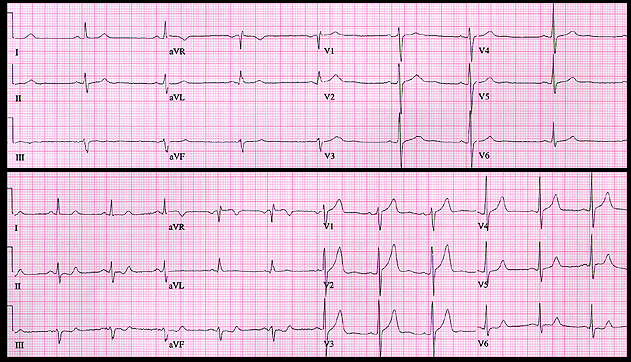
Note the differences in the ST segments and T waves in the 2 tracing shown here. The upper tracing was recorded 2 months after the events chronicled in the last 2 pages and is now within normal limits. The lower tracing, from the same patient, is the one shown on page 10.1.4, recorded just before the onset of ventricular fibrillation. It is very important to look for and recognize the early ECG changes associated with acute ischemia and infarction. All too often, these subtle changes are not recognized and the opportunity to reverse the infarction and/or to prevent sudden cardiac death is lost.
